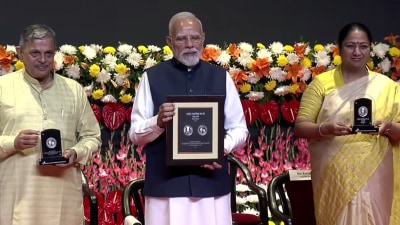Swedish retail giant IKEA has made significant inroads into the Indian market, with four stores now operational in Bangalore, Hyderabad, Mumbai, and Navi Mumbai. While IKEA is primarily known for its home furnishings, food is an integral part of its retail experience in India and across the world. Each store features a versatile and expanding menu, with the iconic IKEA hot dog being the latest addition. In an exclusive interview with Aggam Walia, Ankit Ghai, IKEA India’s Country Food Manager, shared insights into the company’s burgeoning food business in India. Ghai discussed how IKEA is adapting its offerings to suit local tastes while maintaining its commitment to affordability, a cornerstone of the IKEA brand. Edited excerpts:

We have had the best opportunity to tweak our entire menu taking inspiration from the Scandinavian traditions, but after that we have tweaked every single ingredient possible to suit the Indian palate. For example, instead of cream sauce, we try curry sauce or manchurian gravy.
Story continues below this ad
In Bombay, we launched vada pav and in Bangalore, we launched bisibele bhath. In Hyderabad, our biryani was a lot more famous than meatballs when we launched it. It’s not just country, state, or city, the tweaks have to do a lot with the profiles that are near a particular store.
For example, in Worli, we have a slightly different menu as compared to what we serve in Navi Mumbai. Overall, meatballs are certainly our number one seller. The only thing is, our meatball is chicken or veggie, compared to beef and pork that is used globally. We do plan to explore plant-based materials as well, but not immediately. Also, 100 per cent of our range is developed and sourced locally.
Do you see any tilt towards specific cuisines in the Indian market? Also, what are some of the things customers want on the menu?
I have got two very different kinds of feedback from customers. One half is looking at global inspirations to come in, for IKEA to inspire them with a lot more Scandinavian and global food, which people still consider as aspirational. The second half wants more local options. By 2025, we are planning a lot more seasonal and festive menus, like for Diwali, ranging from golgappas and chaats to kebab platters.
Story continues below this ad
When it comes to Christmas, we’ll get more European food. Then, for the Indian summer, we’ll have more salad-based options, mojitos, and shakes. So, different touch points that we have created because everything can’t be done with the existing menu.
Affordability is a key part of IKEA’s brand. How do you see that playing in the food business?
Food has been a key visitation driver catering to a lot more people than the regular shoppers in the store. We are the true affordability drivers when it comes to IKEA– we have over 60-odd products under Rs 100 on our menu. We are also thinking of introducing a one-two-three model, which is basically a Rs 10 ice cream, a Rs 20 chai, and a Rs 30 filter coffee, where the local relevancy and affordability starts coming into picture. We have also launched the iconic hot dogs at Rs 49 for vegetarian and Rs 79 for chicken. For a high price category, there is always room where you can keep on expanding to any extent. Even then, our salmon in India, for example, is one of the cheapest salmon we sell across the market. At IKEA, we work more on the volumes as compared to trying to cut a slice in every single billing.
Unlike most Ikea stores globally, some of its Indian stores are centrally located, like the one in Worli. Do you see customers coming in exclusively for food or is furniture their top priority?
Story continues below this ad
Since the day of launch, 20 to 30 per cent more customers end up having food than actually buying home furnishing goods. Food caters to a lot more visitation if I compare it to just home furnishing. We’re almost like a hand in glove for a person who’s coming in to buy furniture and maybe discovers IKEA food for the very first time. There are different touch points for food across the store where we are interacting with a customer and are offering different menus at different price points.
Any plans of having standalone IKEA restaurants in the future?
That’s not something we follow globally. It’s always IKEA with food in it and food within IKEA. It’s one business model we stick to. Now, we’ve done quite a few global tests in the past because, as I mentioned, our food is already catering to a much larger customer base. But we want to ensure that our home furnishing identity is maintained. That’s why we’ll likely keep walking that path of having food within IKEA stores. But every single touch point we introduce over the next few years will always have a food unit, whether it’s small or big.
In terms of food revenue as a share of total revenue, what has growth been like over the past few years?
Story continues below this ad
Across the world, Asia-Pacific is one of the largest markets when it comes to food contribution to the overall home furnishings business. India obviously is a pioneer on that front. Over the last three years itself, we’ve been able to more than double our food contribution to the overall business. Today, food’s revenue contribution is about 8-10 per cent and we’re again looking at doubling that up. We always knew there’s potential and that’s the reason why the first restaurant was a 1000-seater.

































